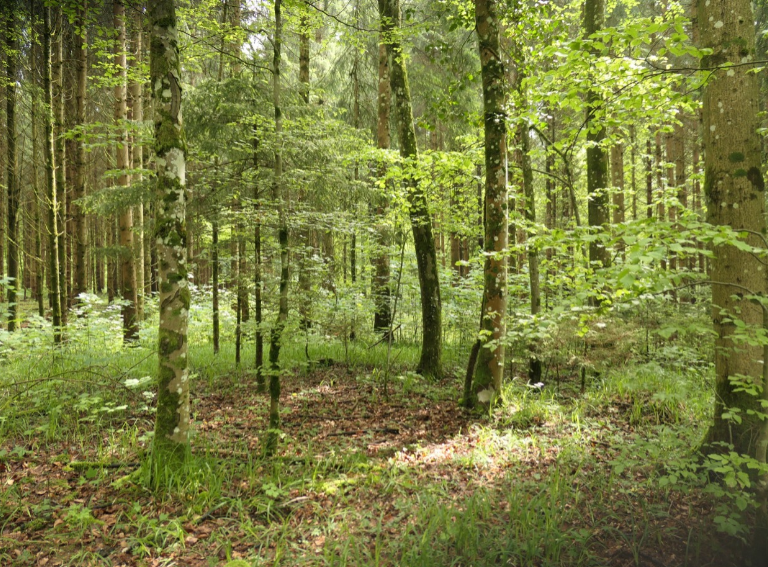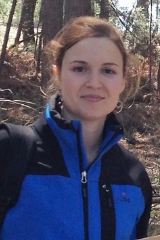Climate change
Swiss forests are getting denser
Forests absorb carbon dioxide and can help to mitigate climate change. But how forests react to climate change is still uncertain. Researchers from the University of Bern provide new insights based on a study of Swiss forests.

How forests react to climate change is very important for climate mitigation: Together with grasslands, forests absorb about a quarter of human-made carbon dioxide (CO2) emissions. But as so often in nature, things are complex. On one hand, increasing atmospheric CO2 has a positive effect on photosynthesis and has allowed trees to grow faster. Also, rising temperatures have extended the growing season in temperate regions. On the other hand, fast-growing trees have a shorter lifespan – researchers refer to this as the ‘grow-fast-die-young’ hypothesis.
But which of these effects outweighs the other? This is the all-important question. The answer determines whether forests can absorb and hold on to carbon from the atmosphere in the long run. Researchers at the University of Bern shed new light on this question in a study published in the journal AGU Advances.
Swiss forests grow
"Previous studies have suggested that faster tree growth does not lead to lasting carbon uptake increases in forests due to the grow-fast-die-young hypothesis," says Laura Marqués, a postdoctoral researcher at the University of Bern who studies the effects of climate change in forest ecosystems. "However, we were not entirely convinced that this hypothesis is universally valid. That is why we decided to conduct a study in Swiss forests," says Marqués.
About the person

Laura Marqués
is a postdoctoral researcher at the Institute of Geography of the University of Bern. She wrote her doctoral thesis on the vulnerability of forests to climate change in the Mediterranean region.
The researchers based their study on unique data from Swiss forests that date back more than seventy yearsand found that forests in Switzerland have been getting denser. That is, the number of trees and their average size has been increasing on average over the past decades. This suggests that the accelerated growth of trees outweighs their shortened lifespan. But is this result reliable? And would other forests have grown similarly?
Heat and drought threaten growth
To assess the reliability of their results, Marqués and her colleagues combined the Swiss forest data with model simulations that allowed them to understand how forests develop under different environmental conditions. ”Our simulations showed that faster tree growth indeed reduces tree longevity, for example through competition for light”, Marqués explains. “Yet, despite the tree longevity decline, this accelerated growth almost always leads to persistent forest biomass gains and thus a net carbon uptake in forests – at least in our model world”.
In the real world, several additional factors play an important role and may become even more important in a future climate, as the researchers point out: Extreme drought and heat can kill trees and reverse the effect of accelerated growth. The risk of such extreme events increases as global warming unfolds and could tip forests from mitigating climate change to contributing to it by releasing the carbon that they store.
Subscribe to the uniAKTUELL newsletter

Discover stories about the research at the University of Bern and the people behind it.
And there are other challenges, too, as Marqués emphasizes: "When analysing forest data, it is particularly difficult to distinguish between human-made and environmental factors.” For example, increasing forest biomass does not necessarily have to be the result of accelerated tree growth but can also stem from recovery from past natural disturbances, such as storms or avalanches. In most forests, natural changes are also overshadowed by forestry interventions. For her study, Marqués and her colleagues therefore had to rely on data from forests that have not been managed for a long time. In the Swiss natural forest reserves, for example, forestry interventions were completely avoided decades before they were established in the 1950s to allow the forest to develop naturally. “This has led to an excellent database for unmanaged forests”, says Marqués.
Next steps
For the time being, the findings of the new study are limited to non-managed forests in Switzerland. The next step will be to apply the methods developed for her study to other types of forest. "It remains to be seen whether this will work", admits Laura Marqués, " but I am confident we can expand it to other areas. The model predictions are clear, and they are supported by empirical observations." In any case, the researcher is currently collecting data from various regions, including the tropics, which she intends to use for placing her findings from Switzerland into a global context.
To the scientific publication
About the Geocomputation and Earth Observation (GECO) research group
Combining data-driven and modeling approaches is the expertise of the GECO group at the Institute of Geography and the Oeschger Center for Climate Research at the University of Bern. The group is led by Benjamin Stocker, who recently moved from ETH Zurich to the University of Bern. One focus of the interdisciplinary team is the "development of data-based methods for detecting and predicting the effects of climate extremes and patterns of water and CO2 exchange between vegetation and the atmosphere".